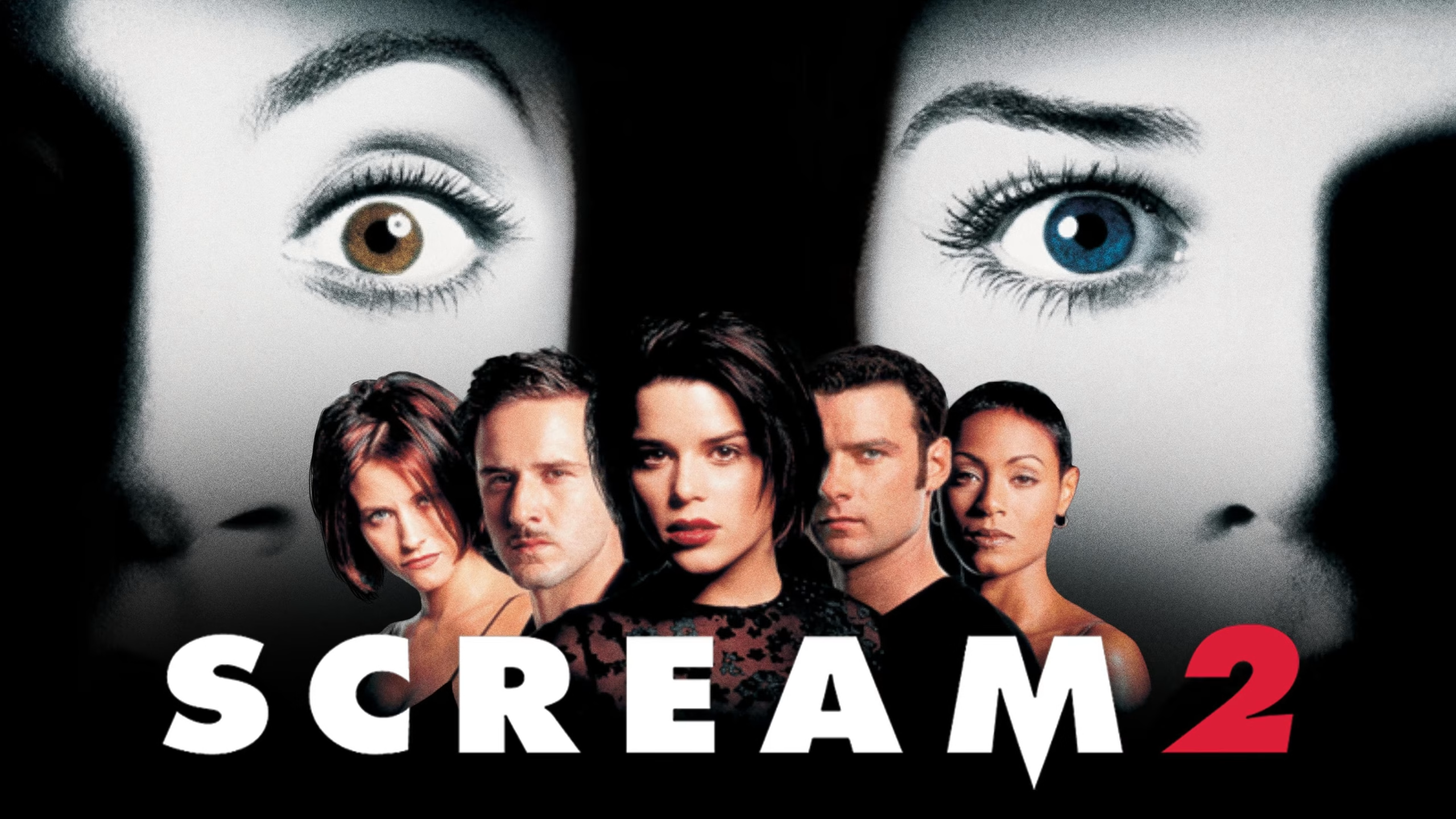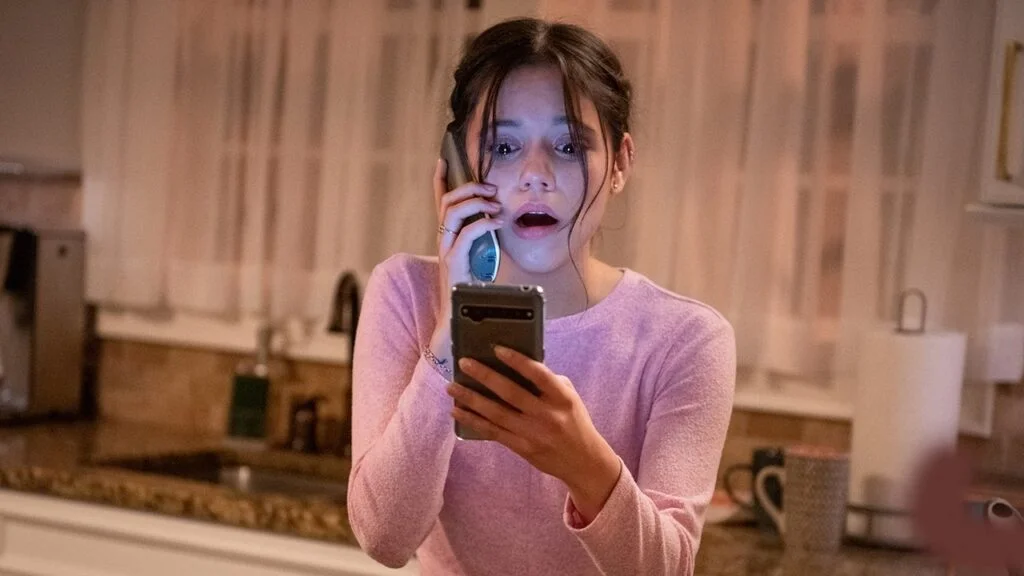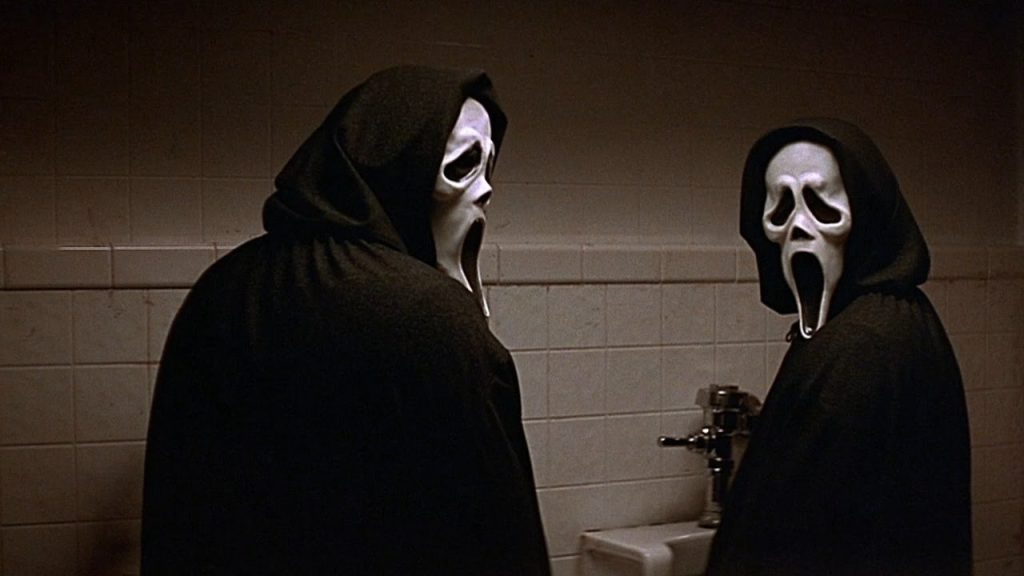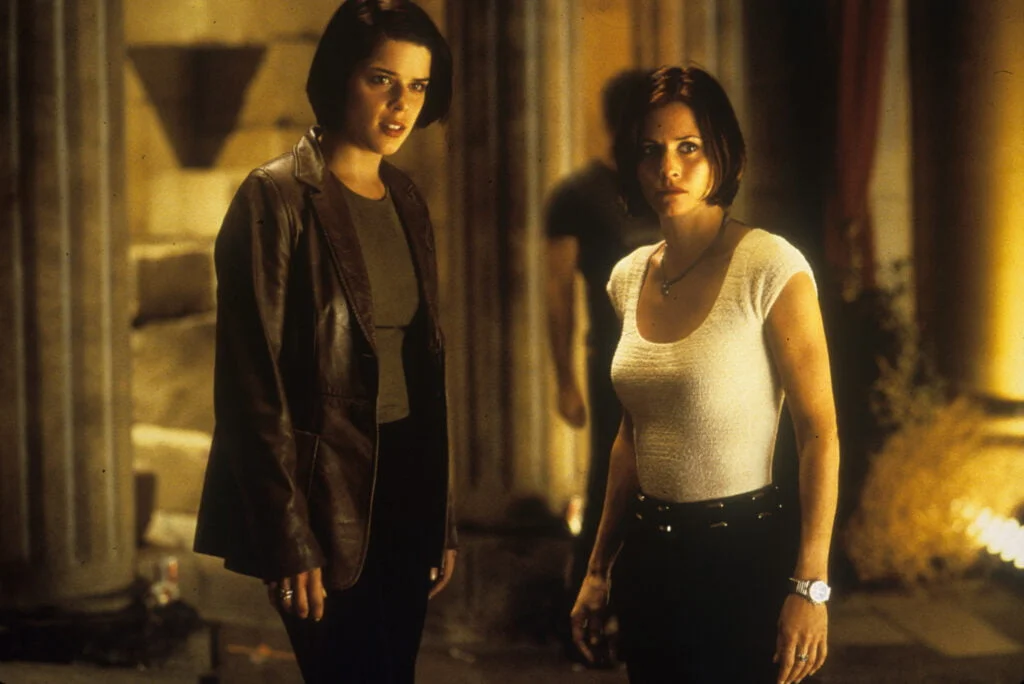Editorials
Dear ‘Diary of a Madman’: Vincent Price, Priceless Memories, and the Perfect Horror Movie
While horror films explore all sorts of different frights, the tale created in Diary of a Madman brings about the most fearsome of horror: losing control over oneself. The movie stars Vincent Price as Magistrate Simon Cordier, who finds himself up against the evil Horla, and features Nancy Kovack playing his love interest, Odette Mallotte. Diary of a Madman serves Vincent Price’s versatile acting ability, with intricate set design, horror, and campiness together to create a piece that is remarkable on its own and even more enjoyable in good company.

The company you keep as you watch a movie can significantly alter your outlook on the film. Because of this, my heart automatically went to one place when given the task of composing a love letter to a horror movie. A living room in my mother’s house, with candles lit and Halloween décor abound, with Turner Classic Movies playing in the background the whole month of October. Listening to my mom imitating Renfield in Dracula(1931), her recounting theaters handing out barf bags at showings of Mark of the Devil, and quoting lines from Whatever Happened to Baby Jane? Many memories were formed over so many Halloween seasons, but if one film were to be the epitome of this experience, it would undoubtedly be Diary of a Mad Man.
While horror films explore all sorts of different frights, the tale created in Diary of a Madman brings about the most fearsome of horror: losing control over oneself. The movie stars Vincent Price as Magistrate Simon Cordier, who finds himself up against the evil Horla, and features Nancy Kovack playing his love interest, Odette Mallotte.
Diary of a Madman serves Vincent Price’s versatile acting ability, with intricate set design, horror, and campiness together to create a piece that is remarkable on its own and even more enjoyable in good company.

The Horror of Madness
The concept that reality isn’t what we perceive it to be is one of the most haunting. Therefore, a horror tale that amasses any descent into madness is automatically beloved by me. Doubly so when it is a supernatural entity causing the insanity, such is Diary of a Madman’s antagonist: The Horla.
Starting with a funeral for one Simon Cordier, the attendees are instructed by a letter from Simon just before his death to read his diary after he’s been buried. Vincent Price’s voice begins: “I speak to you from beyond the grave….” From there, viewers learn the tragic tale of Simon Cordier; how he became trapped within the clutches of a creature with no other want than to control and weaken the wills of humankind.
The ever-present omnipotent Horla drives the story, while the knowledge of the eventual death of the magistrate simmers in the background, which kept my mother and I’s attention locked onto the screen. Then, at the helm of all that suspense is the horror icon himself: Vincent Price.

The Versatility of Vincent Price
Vincent Price’s impact on decades worth of horror cannot be denied. He is synonymous with so many classic scary movies that, naturally, a film starring him would be the first to come to mind from the days of TCM marathons with my mother.
Like many 90’s babies, Edward Scissorhands was a childhood favorite, so this film was not my introduction to Vincent Price. However, the movie did introduce me to his incredible range as an actor.
Watching Vincent Price transform from a confident, good-natured magistrate into a wild-eyed murderer is impressive, to say the very least. But he didn’t stop there. He drops back into his role of Magistrate Simon, though this time in a corrupt and manipulative form. It ends with him laughing maniacally, his transformation into a madman complete. However, not just Vincent Price’s acting aided in creating a perfect horror film.
The Diary of a Madman Set
The beauty of this movie is undeniable. Each set is meticulously crafted with beautiful furniture fit to match the 1886 setting. Watching the film feels like a time machine within a time machine: an older time reenacting an even older time.
Moreover, the film features the most beautiful cameo necklace I have ever seen as Simon Cordier gifts the cameo that once belonged to his long-deceased wife to his new lover.
If I remember nothing else about this movie, I will remember how my mom laughed at my obsession with this necklace. If that necklace were mine, I think I would rise from the grave to reclaim my ownership.
Aside from presenting gorgeous backdrops, the setting worked in silence to reveal hidden truths about the characters and create a frightening atmosphere.

The Truth Hidden in Plain Colors
Diary of a Mad Man possesses this peculiar quality, much like Alfred Hitchcock’s The Birds, where in hindsight, it feels like it was made in black and white despite the film being entirely in color.
In fact, colors are used symbolically throughout the entire movie. Red is often associated with goodness, as Cordier’s magistrate robes are red, as is the cloth on which a plot-turning crucifix sits, as are the outfits of characters acting in good nature. When Simon Cordier is at the peak of his goodness, he wears red and sits on a red chair.
Browns and blues are the colors worn by characters with a neutral disposition, not acting in any amount of supreme kindness or ill intent. The only exception to this rule seems to be Vincent Price, who adorns the neutral colors as he hangs in the balance between his goodness and The Horla’s evil influence.
Green is the most recurring representation of someone’s disposition, as characters’ eyes glow green when The Horla possesses them. More than that, though, green shows up consistently in both set design and costumes, presenting a commentary on the perceived evils of humankind.
Unsettling Atmosphere Through Set Details
Jeanne (Elaine Devry) wore green when she sought after a married man, and Odette wore green when she was being materialistic and intentionally deceptive with both Simon and her husband (Chris Warfield). The most intense representation of green comes from Simon Cordier’s home.
The walls, furniture, and décor all adorn green hues, representing the wrongness within the home’s history and the fact that as much as the magistrate tried to suppress his harsh past, he wore it all over his walls.
Interestingly, his office is red and green, offering insight into his mental state at work. As he surrounds himself with the red books and the cherry wood desk, working diligently as a magistrate, the evil green underbelly is ever-present, especially in the background.
An intelligent horror film where you can learn so much more, not by the character’s words or actions, but the background of the scenes is a rare find. Films like this offer something new to viewers every time they watch them, and any movie that does that so beautifully automatically has my adoration.
The Unspoken Horror
The artistic choice on set did much more than represent characters’ intentions or put on a pretty show. The horror movie masterfully utilized the setting to make scenes more unsettling. Whether it was the statue heads that seemed to be watching Simon create a sculpture of Odette, the heavy cobwebs in the abandoned attic or the open windows that ensure The Horla could enter undetected; these seemingly unimportant details only amplify the pre-existing horror.
Necessary Camp
For all the serious subject matter, the film is not without its campiness, as Vincent Price’s overdramatic reactions to The Horla’s voice are borderline comical. Although, it’s that sort of campiness that allows it to embody all the elements of what TCM marathons with my mom were to me: renowned actors, beautiful settings, intrinsic horror, and the moments we can make fun of together. Understand that no movie is without its laughable moments when watching it with someone who makes you laugh.
Dear Diary, Dear Mom
In 2009 my mom was diagnosed with leukemia (CML, which progressed to AML). After experimental round-the-clock chemo treatment and two bone marrow transplants, she beat that horrible cancer. But the victory came at a price, as the bone marrow transplants resulted in her developing Graft Versus Host Disease (GVHD), primarily affecting her joints, stomach, eyes, and more. As her health has declined, I understand firsthand the value of seemingly unimportant moments and am eternally grateful to share these irreplaceable memories with my mother.
This film reminds me of just who I can thank for my innate love of this spooky genre. Movies have this unique quality that just as they encapsulate the actors and dialogue within a timeless recording, as do our memories record where we were the first time that we enjoyed a particular movie.
Every time I watch the film, I am transported back in my memory to a time, a person, and a movie, that I will always hold close to me. No matter where life takes us, we will always have the night we watched Diary of a Madman together.
If you haven’t seen it or, like me, are now craving a re-watch, stream it today on Paramount+.
Editorials
‘The Woman in Black’ Remake Is Better Than The Original

As a horror fan, I tend to think about remakes a lot. Not why they are made, necessarily. That answer is pretty clear: money. But something closer to “if they have to be made, how can they be made well?” It’s rare to find a remake that is generally considered to be better than the original. However, there are plenty that have been deemed to be valuable in a different way. You can find these in basically all subgenres. Sci-fi, for instance (The Thing, The Blob). Zombies (Dawn of the Dead, Evil Dead). Even slashers (The Texas Chainsaw Massacre, My Bloody Valentine). However, when it comes to haunted house remakes, only The Woman in Black truly stands out, and it is shockingly underrated. Even more intriguingly, it is demonstrably better than the original movie.
The Original Haunted House Movie Is Almost Always Better
Now please note, I’m specifically talking about movies with haunted houses, rather than ghost movies in general. We wouldn’t want to be bringing The Ring into this conversation. That’s not fair to anyone.
Plenty of haunted house movies are minted classics, and as such, the subgenre has gotten its fair share of remakes. These are, almost unilaterally, some of the most-panned movies in a format that attracts bad reviews like honey attracts flies.
You’ve got 2005’s The Amityville Horror (a CGI-heavy slog briefly buoyed by a shirtless, possessed Ryan Reynolds). That same year’s Dark Water (one of many inert remakes of Asian horror films to come from that era). 1999’s The House on Haunted Hill (a manic, incoherent effort that millennial nostalgia has perhaps been too kind to). That same year there was The Haunting (a manic, incoherent effort that didn’t even earn nostalgia in the first place). And 2015’s Poltergeist (Remember this movie? Don’t you wish you didn’t?). And while I could accept arguments about 2001’s THIR13EN Ghosts, it’s hard to compete with a William Castle classic.
The Problem with Haunted House Remakes
Generally, I think haunted house remakes fail so often because of remakes’ compulsive obsession with updating the material. They throw in state-of-the-art special effects, the hottest stars of the era, and big set piece action sequences. Like, did House on Haunted Hill need to open with that weird roller coaster scene? Of course it didn’t.
However, when it comes to haunted house movies, bigger does not always mean better. They tend to be at their best when they are about ordinary people experiencing heightened versions of normal domestic fears. Bumps in the night, unexplained shadows, and the like. Maybe even some glowing eyes or a floating child. That’s all fine and dandy. But once you have a giant stone lion decapitating Owen Wilson, things have perhaps gone a bit off the rails.

The One Big Exception is The Woman in Black
The one undeniable exception to the haunted house remake rule is 2012’s The Woman in Black. If we want to split hairs, it’s technically the second adaptation of the Susan Hill novel of the same name. But The Haunting was technically a Shirley Jackson re-adaptation, and that still counts as a remake, so this does too.
The novel follows a young solicitor being haunted when handling a client’s estate at the secluded Eel Marsh House. The property was first adapted into a 1989 TV movie starring Adrian Rawlings, and it was ripe for a remake. In spite of having at least one majorly eerie scene, the 1989 movie is in fact too simple and small-scale. It is too invested in the humdrum realities of country life to have much time to be scary. Plus, it boasts a small screen budget and a distinctly “British television” sense of production design. Eel Marsh basically looks like any old English house, with whitewashed walls and a bland exterior.
Therefore, the “bigger is better” mentality of horror remakes took The Woman in Black to the exact level it needed.

The Woman in Black 2012 Makes Some Great Choices
2012’s The Woman in Black deserves an enormous amount of credit for carrying the remake mantle superbly well. By following a more sedate original, it reaches the exact pitch it needs in order to craft a perfect haunted house story. Most appropriately, the design of Eel Marsh House and its environs are gloriously excessive. While they don’t stretch the bounds of reality into sheer impossibility, they completely turn the original movie on its head.
Eel Marsh is now, as it should be, a decaying, rambling pile where every corner might hide deadly secrets. It’d be scary even if there wasn’t a ghost inside it, if only because it might contain copious black mold. Then you add the marshy grounds choked in horror movie fog. And then there’s the winding, muddy road that gets lost in the tide and feels downright purgatorial. Finally, you have a proper damn setting for a haunted house movie that plumbs the wicked secrets of the wealthy.
Why The Woman in Black Remake Is an Underrated Horror Gem
While 2012’s The Woman in Black is certainly underrated as a remake, I think it is even more underrated as a haunted house movie. For one thing, it is one of the best examples of the pre-Conjuring jump-scare horror movie done right. And if you’ve read my work for any amount of time, you know how positively I feel about jump scares. The Woman in Black offers a delectable combo platter of shocks designed to keep you on your toes. For example, there are plenty of patient shots that wait for you to notice the creepy thing in the background. But there are also a number of short sharp shocks that remain tremendously effective.
That is not to say that the movie is perfect. They did slightly overstep with their “bigger is better” move to cast Daniel Radcliffe in the lead role. It was a big swing making his first post-Potter role that of a single father with a four-year-old kid. It’s a bit much to have asked 2012 audiences to swallow, though it reads slightly better so many years later.
However, despite its flaws, The Woman in Black remake is demonstrably better than the original. In nearly every conceivable way. It’s pure Hammer Films confection, as opposed to a television drama without an ounce of oomph.
Editorials
Is ‘Scream 2’ Still the Worst of the Series?

There are only so many times I can get away with burying the lede with an editorial headline before someone throws a rock at me. It may or may not be justified when they do. This article is not an attempt at ragebaiting Scream fans, I promise. Neither was my Scream 3 article, which I’m still completely right about.
I do firmly believe that Scream 2 is, at the very least, the last Scream film I’d want to watch. But what was initially just me complaining about a film that I disregard as the weakest entry in its series has since developed into trying to address what it does right. You’ve heard of the expression “jack of all trades, master of none”, and to me Scream 2 really was the jack of all trades of the franchise for the longest time.
It technically has everything a Scream movie needs. Its opening is great, but it’s not the best of them by a long shot. Its killers are unexpected, but not particularly interesting, feeling flat and one-dimensional compared to the others. It has kills, but only a few of them are particularly shocking or well executed. It pokes fun at the genre but doesn’t say anything particularly bold in terms of commentary. Having everything a Scream movie needs is the bare minimum to me.
But the question is, what does Scream 2 do best exactly? Finding that answer involves highlighting what each of the other sequels are great at, and trying to pick out what Scream 2 has that the others don’t.

Scream 3 Is the Big Finale That Utilizes Its Setting Perfectly
Scream as a series handily dodges the trap most horror franchises fall into: rehashing and retreading the same territory over and over. That’s because every one of its films are in essence trying to do something a little different and a little bolder.
Scream 3 is especially bold because it was conceived, written, and executed as the final installment in the Scream series. And it does that incredibly well. Taking the action away from a locale similar to Woodsboro, Scream 3 tosses our characters into the frying pan of a Hollywood film production. Despite its notorious number of rewrites and script changes (one of which resulted in our first solo Ghostface), it still manages to be a perfect culmination of Sidney Prescott’s story.
I won’t repeat myself too much (go read my previous article on the subject), but 3 is often maligned for as good a film as it turned out to be. And for all of its clunkier reveals, and its ghost mom antics, it understands how to utilize its setting and send its characters off into the sunset right.
Scream 4’s Meta Commentary Wakes Scream from a Deep Sleep
As Wes Craven’s final film, Scream 4 has a very special place in the franchise. It was and still is largely adored for bringing back the franchise from a deep 11-year sleep. With one of the craziest openings in any horror film, let alone a Scream film, it sets the tone for a bombastic return and pays off in spades with the journey it takes us on.
Its primary Ghostface Jill Roberts is a fan favorite, and for some people, she is the best to ever wear the mask. Its script is the source of many memorable moments, not the least of which is Kirby’s iconic rapid-fire response to the horror remakes question. And most importantly, it makes a bold and surprisingly effective return for our main trio of Sidney, Dewey, and Gale, whose return didn’t feel trite or hammy when they ended up coming back to Woodsboro for more.
Craven’s work on 4 truly understands the power its predecessors had exerted on the horror genre, both irreverent in its metacommentary and celebratory of the Scream series as a whole. The film is less of a love letter to the genre and more of a kicking down of the door to remind people what Scream is about. 4’s story re-established that Scream isn’t going away, no matter how long it takes for another film, and no matter how many franchises try to take its place.

Scream 5 & 6 Is Radio Silence’s Brutal and Bloody Attitude Era
Put simply, Scream 5 and 6’s strong suit was not its characters. It was not its clever writing. The Radio Silence duology in the Scream series excelled in one thing: beating the hell out of its characters.
Wrestling fans (of which there is an unsurprising amount of crossover with horror fans) will know why I call it the Attitude Era. Just like WWE’s most infamous stretch of history, Radio Silence brought something especially aggressive to their entries. And it’s because these films were just brutal. Handing the reins to the series, Bettinelli-Olpin and Gillet gifted a special kineticism to the classic Scream chase sequences, insane finales, and especially its ruthless killers.
All five of the Ghostfaces present in 5 and 6 are the definition of nasty. They’re unrelenting, and in my humble opinion, the freakiest since the original duo of Stu Macher and Billy Loomis. Getting to hear all the air get sucked out of the room as Dewey is gutted like a fish in 5 was still an incredible moment to experience in theatres, and it’s something I don’t think would have happened if the films were any less mean and any less explosively violent.

So, What Does Scream 2 Do Best Exactly?
So now, after looking at all these entries and all of their greatest qualities, what does Scream 2 have that none of the others do? What must I concede to Scream 2?
Really great character development.
Film is a medium of spectacle most of the time, and this is reflected in how we critique and compliment them. It affects how we look back on them, sometimes treating them more harshly than they deserve because they don’t have that visual flash. But for every ounce of spectacle Scream 2 lacks, I have to admit, it does an incredible job of developing Sidney Prescott as a character.
On a rare rewatch, it’s clear Neve Campbell is carrying the entirety of Scream 2 on her back just because of how compelling she makes Sidney. Watching her slowly fight against a tide of paranoia, fear, and distrust of the people around her once more, watching her be plunged back into the nightmare, is undeniably effective.
It’s also where Dewey and Gale are really cemented as a couple, and where the seeds of them always returning to each other are planted. Going from a mutual simmering disrespect to an affectionate couple to inseparable but awkward and in love is just classic; two people who complete each other in how different they are, but are inevitably pulled back and forth by those differences, their bond is one of the major highlights throughout the series.

Maybe All the Scream Films Are Just Good?
These three characters are the heart of the series, long after they’ve been written out. I talk a big game about how Scream 3 is the perfect ending for the franchise, but I like to gloss over the fact that Scream 2 does a lot of the legwork when it comes to developing the characters of Dewey, Gale, and especially Sidney.
Without 2, 3 just isn’t that effective when it comes to giving Sidney her long deserved peace. Without 2, the way we see Sidney’s return in 4 & 5 doesn’t hit as hard. All of the Scream movies owe something to Scream 2 in the same way they owe something to the original Scream. I think I’ve come to a new point of view when it comes to the Scream franchise: maybe there is no bad entry. Maybe none of them have to be the worst. Each one interlinks with the others in their own unique way.
And even though I doubt I will ever really love Scream 2, it has an undeniable strength in its character writing that permeates throughout the whole franchise. And that at the very least keeps it from being the worst Scream film.
























